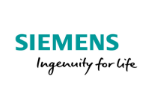Leveraging Data for Optimal Design: Human, Efficient and Smart
Michelle Gangel, CRB
Isabel Mandujano, CRB
Data is all around us, in this era of tech devices, social media and information. Project teams can learn to gather, analyze and apply this wealth of information to drive better outcomes for our clients, achieve healthier human-centric environments, make the best use of limited resources and learn from past experiences to drive innovation.
Whether the lab is for research, testing or teaching, operating at optimal performance is the goal for any lab. This presentation will cover case studies from recent work to illustrate how data and metrics can act effectively as a tool to guide the decision-making process at early design stages resulting in more human, efficient and smart buildings.
Learning Objectives
- Identify tools and strategies for data gathering, analysis and interpretation;
- Understand how to leverage technology to achieve human-centric design;
- Learn how strategic planning leads to more sustainable building programs; and
- Appreciate the importance leveraging data to improve professional practice.
Biographies:
Michelle is a senior Architect that has dedicated her professional life to the creation of spaces for learning, research, exploration and collaboration. Her project experience over the past 20+ years includes a variety of learning and research laboratories throughout the Midwest. Her commitment to design excellence and sustainability have always been the focus of her approach to projects. She is a founding member and served as Vice President of the Heart of America chapter of I2SL.
Isabel Mandujano, a CRB Senior Laboratory Planner, brings more than 15 years of experience in programming, design and documentation in a wide variety of project types. Isabel enjoys the technically complex aspects of laboratory design that require unique attention to detail. Her science + technology experience includes laboratories for teaching, testing and research for public and private sector clients throughout the United States.
Note: I2SL did not edit or revise abstract or biography text. Abstracts and biographies are displayed as submitted by the author(s).



